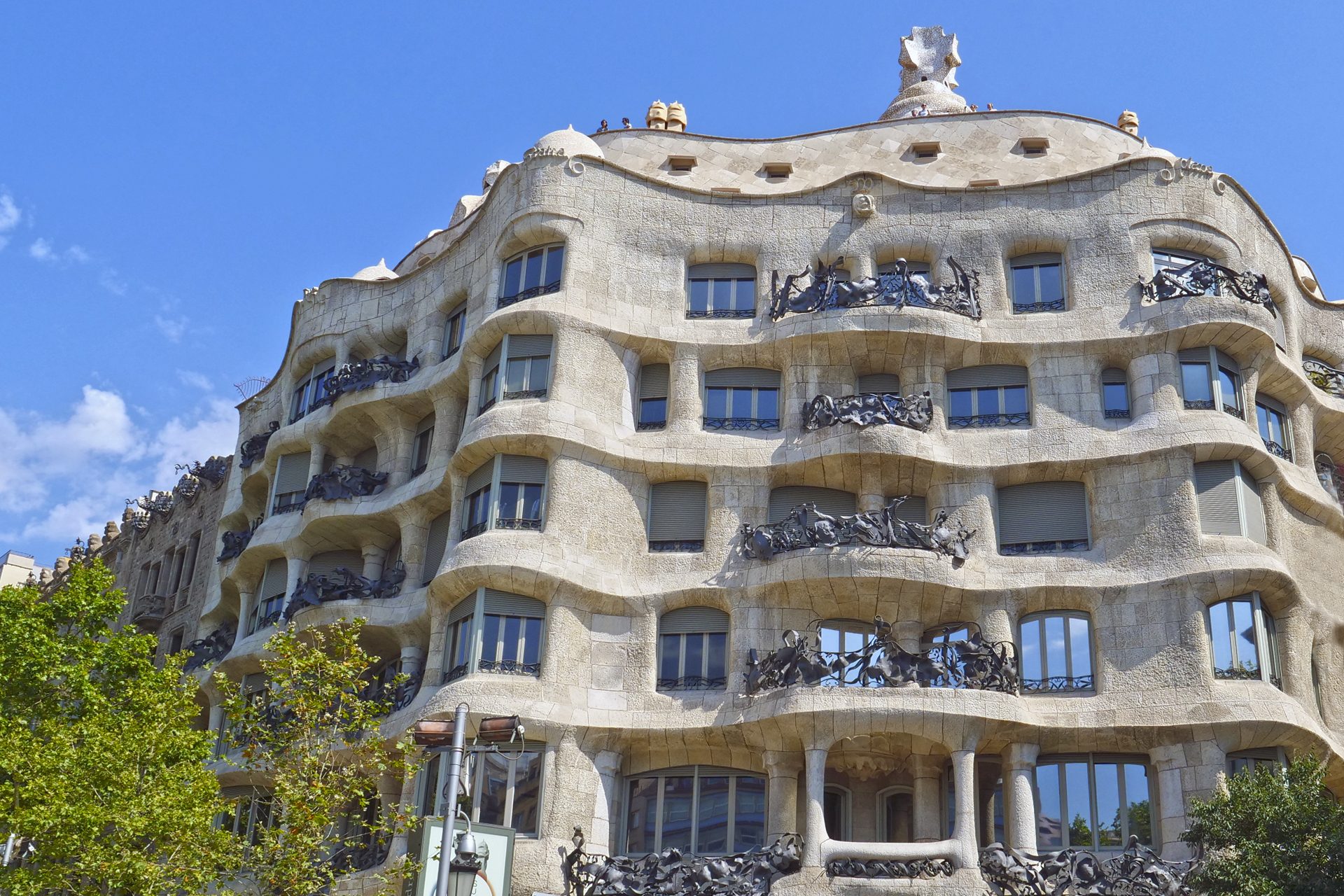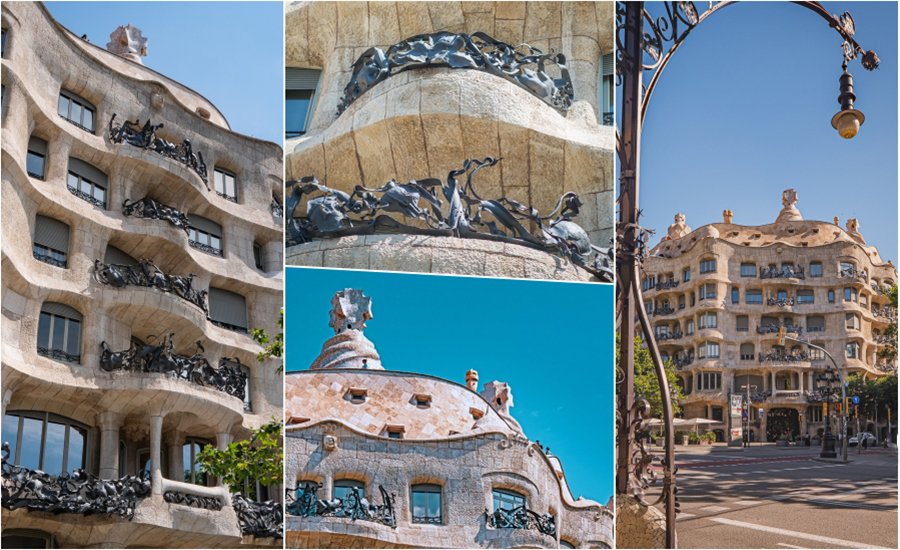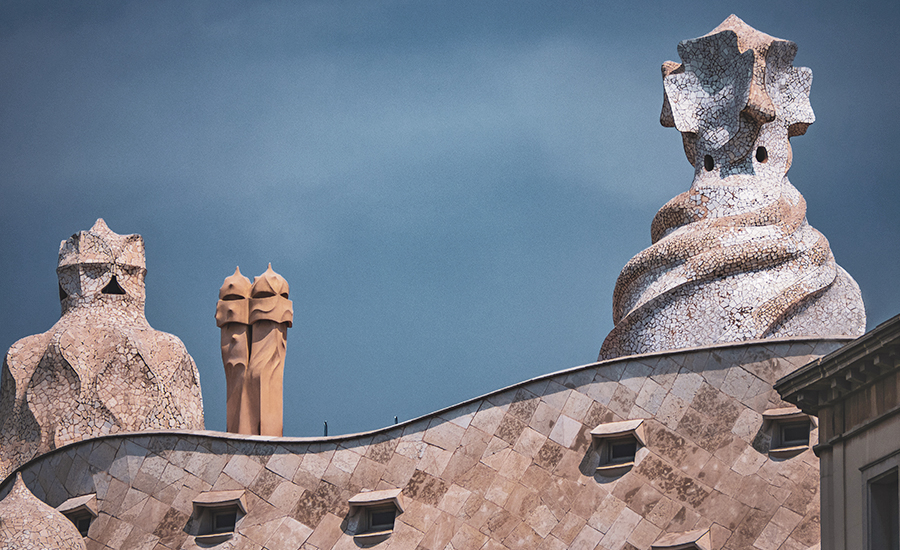La Pedrera: Gaudí's last great work of art

Among Antoni Gaudí’s masterpieces, we could not forget La Pedrera. Also known as Casa Milà, after the surname of its first owners, this iconic building with its undulating facade is considered the last great work of the Catalan architect. It was built between 1906 and 1912 in the heart of Passeig de Gràcia, at a time when this emblematic avenue was at its most splendid. Located at number 92, it is inscribed on the UNESCO World Heritage List.
At the dawn of the 20th century, Passeig de Gràcia was the most exclusive area of Barcelona, a promenade where the bourgeoisie began to establish their residences. In this context, the couple formed by Pere Milà and Roser Segimon, who commissioned Gaudí to build their residence, entered the scene. In those years, Gaudí had already become one of the most prestigious architects. In 1906, when work began on the Casa Milà, the Basilica of the Sagrada Familia was getting closer and closer to becoming a reality and the Casa Batlló had just been inaugurated.

The aim of the Milà family was to live on the main floor of the Casa Milà and rent out the other rooms. The construction of this building was not without obstacles. For example, the rooftop, one of the most important spaces of the Casa Milà, exceeded the maximum dimensions, according to the ordinances of the City Council. Finally, it was determined that it was a monumental building, so it was able to overcome these difficulties.
This was good news, without any doubt, since, as we said, the rooftop is one of the most outstanding elements of the building. You only have to go up to discover it. This space is dotted with chimneys and ventilation towers in shapes reminiscent of an army of warriors. Not to mention, of course, the formidable views that this place offers.
But there is much more to see in La Pedrera (Spanish for “The stone quarry”), so called because stone is the main material used in the facade. The stone originally came from the Garraf quarry and later from the town of Vilanova. While on the outside the thirty wrought iron balconies are surprising, inside it is possible to see a representation of one of the bourgeois residences, with period furniture.

Gaudí’s stamp is evident in every corner, with columns that look more like sculptures, floral ornamentation and paintings in the lobbies. The attic houses the Gaudí Space, where there is an exhibition with models and drawings of the creations of the famous Catalan architect.
Since its inauguration, La Pedrera has had numerous tenants. From the Spanish-American Pension to diplomatic personnel and even an Egyptian prince. As of 2013, it houses the headquarters of the Catalunya La Pedrera Foundation and stands as a prominent cultural center in Barcelona. However, another part of the building remains residential.

